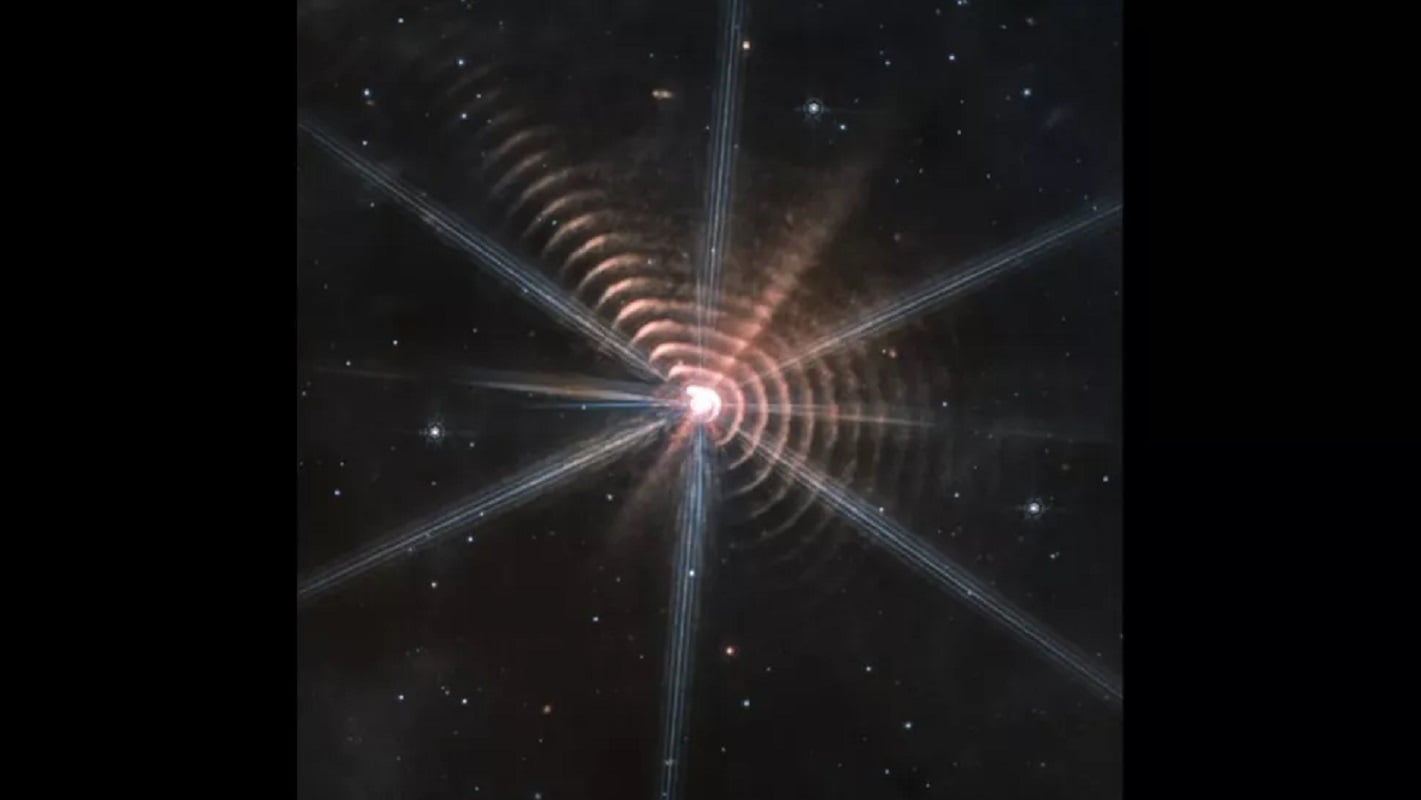Astronomers are still trying to understand the odd concentric rings that the James Webb Space Telescope observed around a faraway star.

The photograph, which was shot in July, sparked a flood of comments and puzzled looks when it was posted on Twitter by citizen scientist Judy Schmidt. It displays the star WR140 surrounded by recurrent circles that resemble ripples and gradually vanish. The circles’ imperfect roundness and vaguely square-like appearance have led some people to theorize that they might have come from another planet.
In an email to Space.com, Schmidt stated, “I think it’s just nature doing something basic, but when we look at it from only one angle, it looks impossible, at first, to grasp that it is a natural event. “Why is it shaped in that way? Why is it so commonplace?”
The feature was referred to as “bonkers” in a Twitter thread by Mark McCaughrean, an interdisciplinary scientist. He serves as a science advisor to the European Space Agency and a member of the James Webb Space Telescope Science Working Group.
He wrote, “The six-pointed blue structure in this #JWST MIRI image is an artifact caused to optical diffraction from the brilliant star WR140. “However, the crimson, wavy-yet-boxy material that surrounds WR140 is real. in space, in fact. close to a star.”
He mentioned that WR140 is a Wolf-Rayet star, which is a star that has ejected a large amount of its hydrogen into space. He continued that the dust surrounding these objects and a companion star molding into the odd shells are also there.
A scholarly publication regarding this puzzling occurrence is presently being reviewed, so astronomers will soon have additional information.
Ryan Lau, an astronomer at NOIRLab and the project’s primary investigator, responded to the Twitter thread with, “Yes, those nested’squircular’ rings are real. “Please stay tuned for the complete tale. Our paper on this has been submitted.”
The so-called variable star WR140, 5,600 light-years from Earth in the Cygnus constellation, periodically dims and brightens. It remains to be discovered whether the star’s variability has anything to do with the enigmatic ripples.
